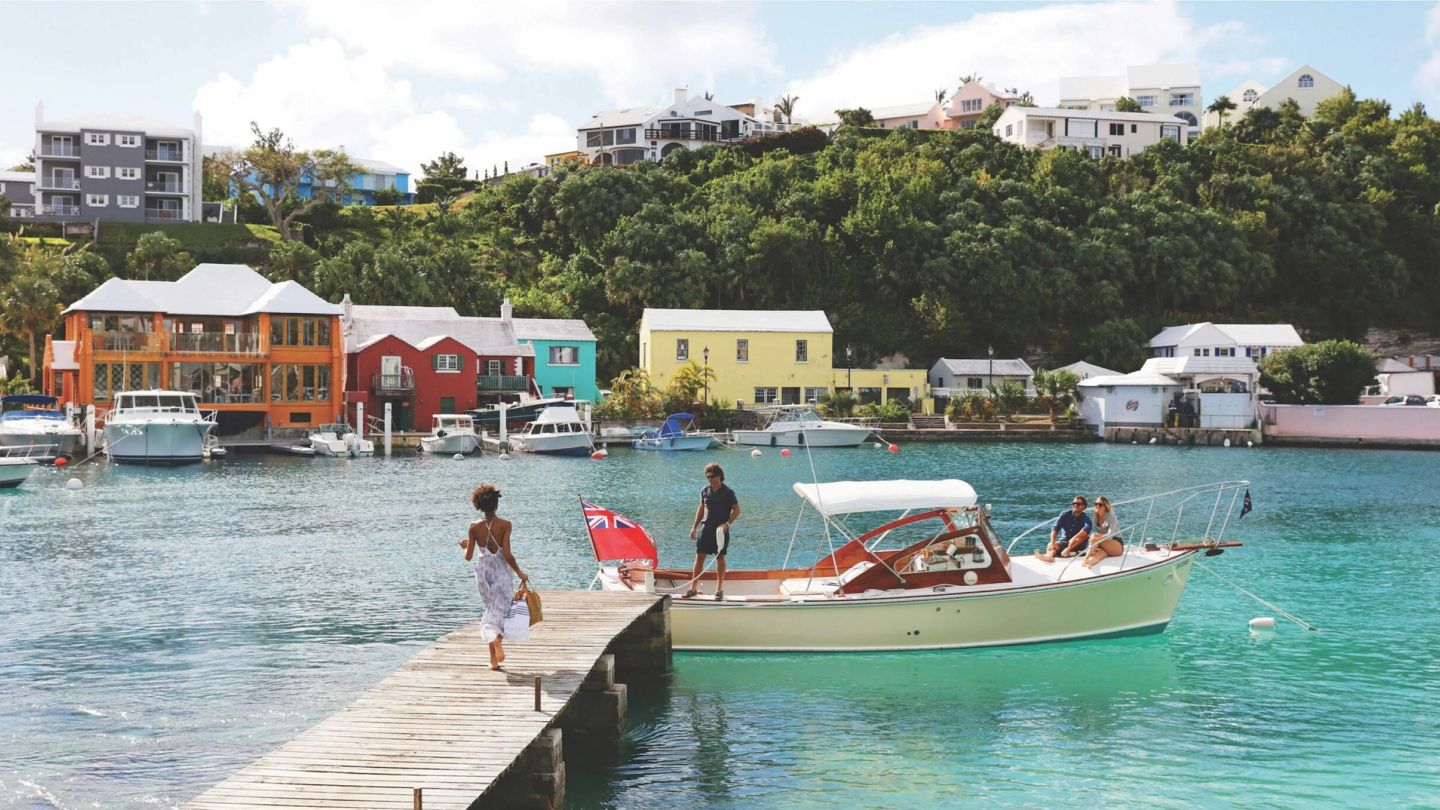

Words: Hamish Roy
The persistence of a certain triangle-shaped conspiracy theory stands as a reminder that a good story sells, particularly when it indulges our delight in the otherworldly. But now’s the time to refocus the lens, revealing a Bermuda characterised by its cultural dynamism and memorable heritage. It’s a heady mixture – one with the power to captivate without any need for paranormal flights of fancy.
Sitting in the Sargasso Sea, Bermuda lies 665 miles east of Cape Hatteras, North Carolina’s most southeasterly point. Contrary to the visitors’ maps that show it as a single landmass, it’s actually made up of a tight cluster of seven principal islands and 138 satellites. The largest of them is Main Island, home to Bermuda’s capital, Hamilton. The smallest, on the other hand, are tiny; some have just a single whitewashed house on them, while others, little more than rocky outcrops, are far too small even for that.
Under British jurisdiction since 1609, Bermuda was nevertheless discovered by a Spaniard, Juan de Bermúdez, in 1505. Deemed too small to be of value as a colony, the Spanish left the islands uninhabited, using them instead as a navigational landmark en-route to the New World. It was the British who eventually settled on Bermuda just over a century later, when a supply vessel bound for the Virginia Company’s ill-fated Jamestown colony ran aground on one of its coral reefs. Today, Bermudian culture still resembles its British counterpart the most (and that of our American cousins second), but its influences are rich and varied. African, Portuguese and Caribbean culture are also intertwined within the mix, making for a place of startling variety.
Walking near the Supreme Court in Hamilton, one might encounter the hallmarks of a quintessentially British society. Powdered wigs adorn the heads of the Bermudian judiciary, and police officers sport the iconic custodial helmet of the British ‘bobby’. Yet as a place where cultures have converged throughout history, Bermuda has an absorbent quality to it. To encounter a passing troupe of Gombey dancers is to see Bermudian identity of another sort altogether. In a whirl of coloured tassels, glass beads and feathered headdresses, the Gombey combine a wealth of folk traditions in a manner as fluid as the dance itself. In many ways, to watch this most Bermudian of events is to see a perfect emblem of its culture as it stands today.
The landscape, too, is saturated with history. Bermuda’s architectural heritage provides a fascinating window on to its colonial roots and one-time naval prowess. In terms of buildings, the historic town of St George’s – the site of the original British colony – is particularly bountiful. A UNESCO World Heritage site, the town has retained much of its original street plan, so it is here that the oldest of Bermuda’s pastel-coloured homes are found.
The variety of the islands’ flora is likewise a tale of human endeavour. Settlers have introduced hundreds of new species over the last 400 years, creating a verdant landscape that is shot through with exotic colours. These aren’t only found in the interior, however. The shoreline brings little break to Bermuda’s vibrancy, as it is here that its renowned pink beaches are found. The sand gets its surprising hue from the foraminifera, a microorganism whose pinkish shell is gradually ground into powder by the surf. Of these, the crescent-shaped Horseshoe Beach is the one to aim for. One of the most sought-after in the world, it consistently makes the cut in the ‘best beach’ round-ups found in the most discerning of travel magazines.
With such natural splendour and a subtropical climate, Bermuda lends itself to an outdoor lifestyle, particularly one that is water-based. The coral reefs surrounding the islands have claimed more than 300 ships over the years, making for singular diving experiences. Sea turtles and luminous angelfish can be seen winding through the skeletons of Spanish galleons and Confederate blockade-runners, which themselves hint at the extraordinary part these islands have played in the great episodes of the past.
If, however, it is still the search for the mystical that retains the greatest hold over the traveller’s brain, one has to look no further than the Bermuda Underwater Exploration Institute, which offers an after-dark cruise of particular note. Under the effulgence of a full moon, bioluminescent worms can be seen writhing beneath the surface as they perform elaborate mating rituals. It may be bodily in nature, but this mesmeric light show is nothing if not otherworldly. Find out more here.


